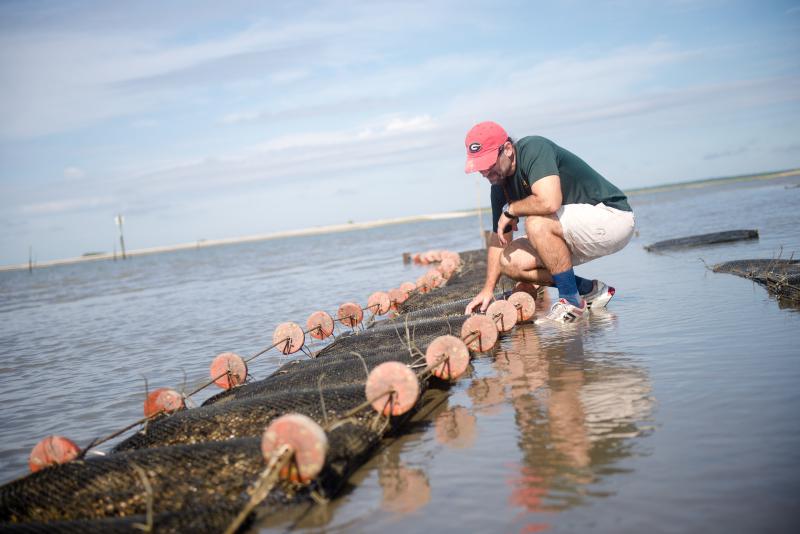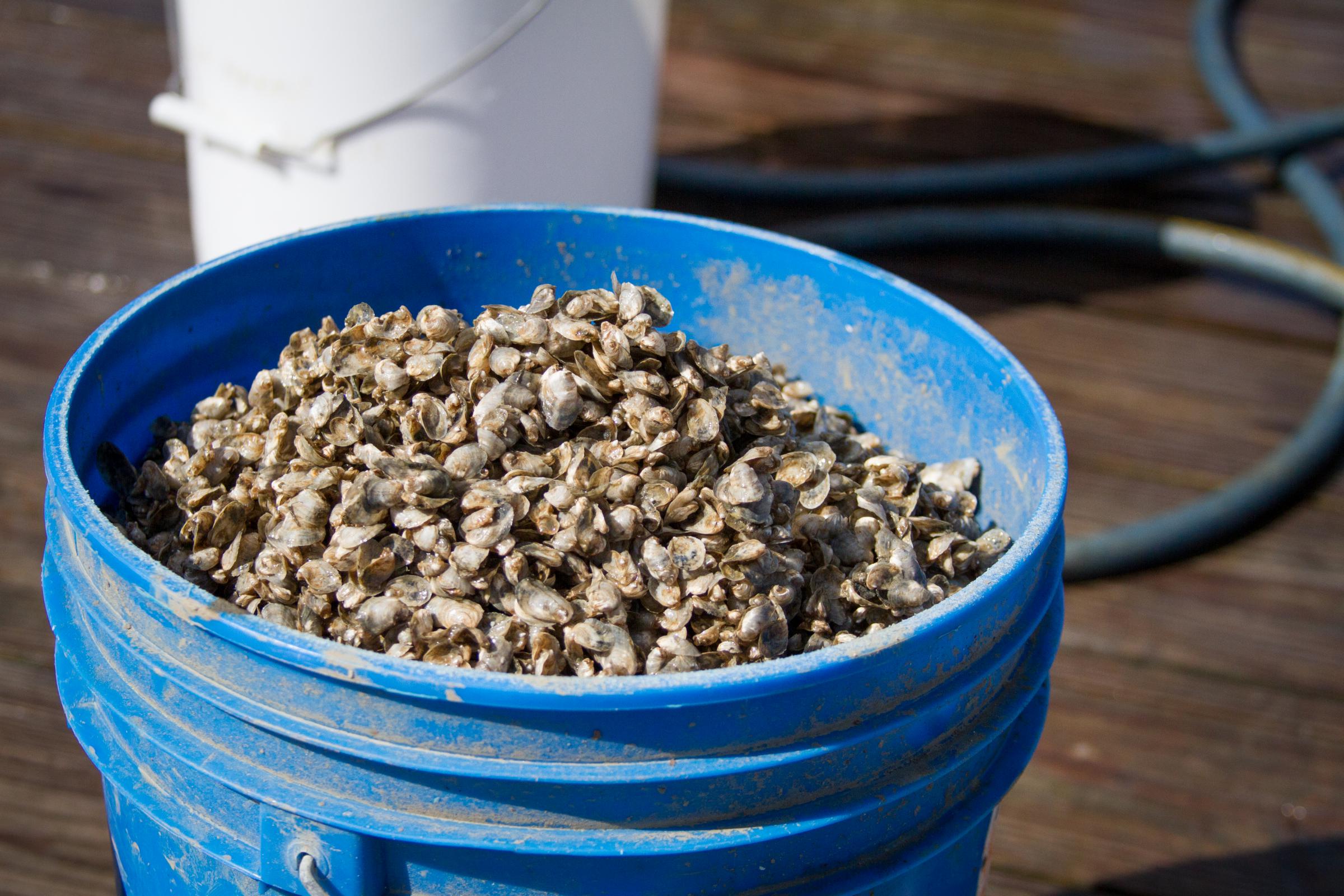
Shellstock oysters, on the other hand, are grown on larger pieces of shell, with multiple spat on each side. For single oysters, farmers take oyster shells from shucked meat processors, dry and cure the shells, and grind them into tiny sand-like grains, providing enough room for just one oyster larvae to attach.

You can either produce single oysters (what we’re used to seeing at the raw bar), or shellstock oysters, which are bunches of oysters which grow stuck together, and will later be used for shucked oyster meats, so the shell’s appearance doesn’t matter. In the hatchery, recycled oyster shells are used to provide this substrate. In the wild, when the oyster larvae develops an eye spot and a foot, it begins to search for a substrate to attach to. The next step is for the larvae to settle down. Inside the tanks, the larvae are graded by size, and the smallest or weakest ones are filtered away. The algae is then pumped through pipes to tanks where the larvae swim. Similar to sourdough starter, part of each algal batch is kept to cultivate the next batch. The tanks hold up to 12,000 gallons and are 12-15 feet high, and the hatchery itself grows algae to feed the oyster larvae. In contrast, larvae are kept in large tanks at the hatchery, where they swim and feed on algae for about 6 weeks. In the wild, larvae feed on algae in the water. You might think that broodstock are chosen for their taste, but they’re actually chosen for their ability to grow quickly and withstand disease. When the time is right, water is heated in a tank and broodstock oysters are induced to spawn.
OYSTER SPAT FEED FULL
Inside these sophisticated biology labs, you’ll find an array of adult broodstock, genetic lineage charts, vats of algae and bubbling tanks full of microscopic shellfish. These systems also allow the grower to influence the look and characteristics of the oysters.Ī hatchery acts as a safe haven for young oysters, where they’re sheltered and protected from predators in an indoor system. So, modern oyster farmers have developed controlled environments for hatchery and nursery systems to improve survival rates. The off-bottom growth is significantly faster than those that are grown on-bottom and their shell has a different character.Turns out, quite a lot can go wrong when raising oysters. These oysters are spread on the tideland on firm substrate, placed in plastic mesh bags supported off the ground by lines, placed in various plastic mesh baskets off-bottom, or placed into trays.

Once the single seed has grown to ½” – ¾” size, they are planted out to our tidelands. The cultchless seed is fed the same microalgae for 4-8 weeks before moving them to an upwell system in the bay, where they can then feed on natural algae. Some of our cultch seed is strung onto ropes that are supported off-bottom for accelerated growth where the substrate is soft or acidic.

The shell with small oyster spat can then be scattered across the tideland for growth to maturity. The cultch seed is fed with tank-grown microalgae for 1-2 weeks before being moved to tidelands for 3-6 months of growth and hardening. Currently, Rock Point uses a remote setting facility to assist acquired oyster larvae in settling onto both shell in plastic mesh bags (cultch seed) and in trays (cultchless single oyster seed). These are now allowed to grow to maturity and sold as single oysters.

In years past, we sold tiny oysters that had naturally set on our gravel tideland as gravel seed. Single oyster seed is periodically available from our nursery. Bags of cultch oyster seed is available from our setting tanks or seasoned from one of our farms. Pacific oysters are set on whole oyster shell in bags or on micro-cultch shell as singles in our remote setting/nursery facility.


 0 kommentar(er)
0 kommentar(er)
